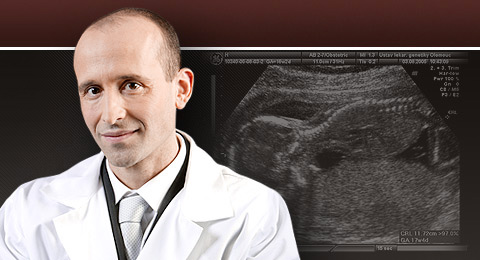Lattová V., Procházka M., Procházková J., Úlehlová J., Slavík L., Ľubušký M., Brychtová P.,Preeklampsie a trombin generační test. Čes. Gynek., 2013, 78 (5), s. 466-472. (Preeclampsia and thrombin generation test)
ABSTRACT
Objective: Acquiring new information to allow prediction of the development of diseases associated with impaired coagulation. Design effective preventive measures most serious diseases (TEN) in the fields of gynecology and obstetrics. For pregnant women with preeclampsia, hypertension compared with women with normal pregnancies could lead to increased thrombin generation due to the synergistic effect of thrombotic risk factors. Based on the results and found statistically significant differences between the groups among pregnant can select for a higher risk of developing deep vein thrombosis. This risk group could then greatly benefit from more stringent followup and possible preventive treatment prophylactic doses of LMWH in reducing maternal and perinatal morbidity and mortality.
Design: Prospective study.
Setting: Department of Obstetrics and Gynecology, University Hospital Olomouc.
Methods: In early pregnancy – during pregnancy standard samples (up to the end of the first trimester) patients venous blood was sampled and they completed information questionnaire. A second sampling was carried out between 24 to 28 week, the third sample and between 36th to 40th week. Obtained blood samples were subsequently processed in the coagulation laboratory Hemato-Oncology Clinic and Olomouc. The blood samples were investigated protein C and S, antithrombin, FVIII level, FII, Leiden, and plasma endothelial microparticles, and lupus anticoagulant and APC resistance standardized methodologies. Thrombin generation was determined thrombin generation test. Thrombin generation was measured fully automatically using a kit (Technothrombin TGA, Technoclone, Vienna, Austria) and analyzer Ceveron Alpha (Technoclone, Vienna, Austria) with fully automatic analysis software. As the main parameter is evaluated by the maximum thrombin generation, at the same time, however, was also detected in the total amount of thrombin and the time until the beginning of the formation of thrombin.
Results: In the period 2008–2011 were analyzed blood samples of 303 healthy pregnant women. 215 women, ie 71% were nuliparas, 60 women, ie 19.8% were primiparas, 28 women, 9,2% were secundiparas The average age of pregnant women was 28.6 years (± 3.8 years). The average maternal weight at the beginning of pregnancy was 63.6 kg (± 7.8 kg). Of the 303 women in 18 (6%) developed slight to moderate degree of preeclampsia or HELLP syndrome with varying severity of clinical manifestations. 20 mothers (6.6%) gave birth prematurely terminated before 37 week of pregnancy. 3 pregnancies (0.9%) were discontinued due to genetic indication for fetal birth defect. The complete study protocol (sampling in all three trimesters) thus completed 280 pregnancies. Of the three evaluated, parameter Lag time, ETP and peak we observed significant differences when comparing physiological pregnancies and pregnancies with preeclampsia (Table 3 and Figure 5-7), the statistical level of p < 0.01. In pregnancies with chronic hypertension, these differences were not significant. Comparison of 18 pregnancies, in which the III. trimester developed preeclampsia with other pregnant with physiological pregnancy did not show statistically significant differences in I. and II. trimester. The results suggest the activation of coagulation through the late stages of pregnancy. Results are influenced by strong clinical variability of disease. In severe and early preeclampsia this activation and significant differences begin much earlier.
Conclusion: We demonstrated significantly higher activation of thrombin generation in women with preeclampsia [10]. Changes in preeclampsia are characterized by increased generation of thrombin in plasma. This fact may explain the partial success of the clinical use of aspirin in preeclampsia. In the third trimester, during the manifestation of the disease, patients with preeclampsia have significantly higher ETP compared to patients with a normal pregnancies. Pregnant women with chronic hypertension also show a slight increase in the activation of thrombin. However, these results are not statistically significant. Examination of coagulation in the first and second trimester in women who later developed preeclampsia, showed no statistically significant differences and thus can not be used in this case as predictive, but only as a diagnostic test.
KEYWORDS thrombin generation test – gravidity – coagulation – preeclampsia


Contact
Professor Marek Lubusky, MD, PhD, MHA
THE FETAL MEDICINE CENTRE
Department of Obstetrics and Gynecology
Palacky University Olomouc, Faculty of Medicine and Dentistry
University Hospital Olomouc
Zdravotníků 248/7, 779 00 Olomouc, Czech Republic
Tel: +420 585 852 785
Mobil: +420 606 220 644
E-mail: marek@lubusky.com
Web: www.lubusky.com


